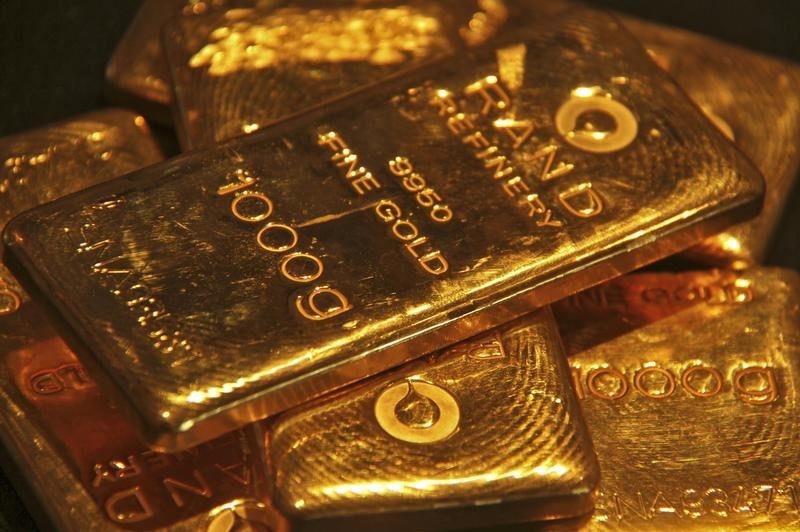Investing.com-- Gold prices kept to a tight range in Asian trade on Tuesday amid persistent concerns over higher-for-longer interest rates, while a U.S. market holiday also made for scant immediate trading cues.
The yellow metal had found some support at the $2,000 an ounce level, recovering sharply from a two-month low over the past two sessions.
But the recovery still put gold comfortably within a $2,000-$2,050 trading range established through most of 2024.
Spot gold prices rose 0.1% to $2,019.17 an ounce, while gold futures expiring in April steadied at $2,030.20 an ounce by 23:34 ET (04:34 GMT).
While increased geopolitical ructions in the Middle East and between Russia and Ukraine offered gold some support in recent sessions, bigger gains in the yellow metal have been largely held back by the prospect of higher for longer U.S. interest rates.
Traders began steadily pricing out chances of early interest rate cuts by the Fed after a series of hotter-than-expected U.S. inflation readings for January, while several Fed officials also warned against bets on early rate cuts.
Higher rates bode poorly for non-yielding assets such as gold, given that they increase the opportunity cost of investing in the yellow metal.
Still, analysts at Citi said gold could soar to $3,000 an ounce by 2025, especially if central banks increase their bullion purchases, inflation turns sluggish and if the global economy enters a deep recession in the coming year.
But the near-term outlook for gold remained uncertain, while other precious metals also weakened. Platinum futures fell 0.4% to $903.10 an ounce, while silver futures fell 0.1% to $23.023 an ounce.
Copper takes little cheer from China rate cut
Among industrial metals, copper prices fell slightly on Tuesday, taking little support from a bigger-than-expected benchmark interest rate cut in top importer China.
Copper futures expiring in March fell 0.1% to $3.8087 a pound.
The People’s Bank of China cut its benchmark five-year loan prime rate by a bigger-than-expected 25 basis points to 3.95%, as it moved to further loosen monetary conditions and shore up an economic recovery.
But investors doubted whether the move would substantially aid the Chinese economy, given that Chinese interest rates have been at record lows for nearly two years.
Beyond fears of economic weakness in the world’s largest copper importer, the UK and Japan both entered a recession in late-2023, ramping up concerns over slowing global economic growth, which is likely to stymie copper demand.
